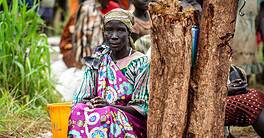Following a period of heady growth, the region’s economies are expected to slow in the face of the eurozone slump, lower EU investment, and coronavirus.

As Europe struggles with the onslaught of the novel coronavirus and its impact on already slow growth in the eurozone–some forecasters have cut their GDP growth projections for 2020 to 0.5% or less–what can Central and Eastern Europe expect? A continuation of the favorable trends of the last three decades, or are darker clouds on the horizon?
Before answering that question, it’s worth taking a step back and observing how far the former Warsaw Pact countries have come. After enjoying GDP growth averaging 4.2% a year between 1992 and 2019, without a single year of contraction even at the height of the 2007-2009 financial crisis, Poland is now Europe’s seventh largest economy. GDP per capita has risen eightfold since 1990 to reach almost $15,500, overtaking Greece and approaching Portugal.
Despite its perennially fractious politics, Romania’s economy is powering ahead, its notorious corruption reined in by President Klaus Iohannis, who won re-election last year, and a new center-right government committed to fiscal probity and transparency.
On February 29, Slovakia’s parliamentary elections overwhelmingly endorsed the Olano (Ordinary People) Party, founded by maverick anti-corruption candidate Ivor Matovic, with 25% of the vote. He is likely to emerge as prime minister in a governing coalition and, it’s widely hoped, work with President Zuzana Caputova to give Slovakia a clean image to match its strong economy.
Elsewhere, the landscape is mixed. Hungary saw democratic norms eroded but civil society remains intact and the opposition is becoming more united and assertive after last year’s elections, which weakened the right-populist Fidesz Party’s grip on power. The Baltic Countries—Latvia, Lithuania and Estonia, all in the EU and eurozone—are expected to keep growing upon an already well established IT sector while the western Balkans generally continue to progress, with non-member countries such as Albania, Montenegro, North Macedonia, Serbia and Turkey preparing for eventual EU accession.
Most close observers agree that the 2020s will mark a period of much lower growth for most of these countries, however, although almost all are likely to grow faster than the eurozone.
Blame goes to a cocktail that includes the eurozone slowdown, exacerbated by the COVID-19 outbreak, which disproportionately impacts countries tied into the EU supply chain: the “Visegrad Four,” Poland, the Czech Republic, Slovakia and Hungary. In Romania, where domestic demand has been driving growth, a less expansionary fiscal policy may also play a role, although economic policy in the non-eurozone countries could become more accommodating if the EU downturn and the virus outbreak become more severe. Both the Czech Republic and Poland, facing what looks like a tight presidential election on May 10, are expected to boost spending and loosen interest rates.
Growth in Poland should slow to 3.5% from last year’s 4.1%, says Liam Peach, assistant economist at Capital Economics, while he expects Hungary to post 4.8% growth compared to 3.5% in 2019 and Romania to slide from 4.3% to 3% this year and maybe 2.3% in 2021. The Baltic states are broadly expected to continue growing at around 3% a year.
“Growth will become more sustainable going forward; there will be a move toward what we would consider more normal conditions,” Peach says.
One reason for the slowdown is a decline in investment after the boom of the past two years, much of which was driven by the flow of EU structural and investment funds (ESIF) into the region.
As many projects that were signed under the last five-year disbursement period come to an end, Peach expects investment growth to slow from 10% last year to 6%, falling further over the next few years. Discussion is still ongoing over fund allocation for the 2021-2026 period, but the loss of UK contributions after Brexit and Brussels’s changing perceptions about recipient country needs suggest the amount available will be much less.
“Poland and Hungary, which did very well out of past disbursements, will be hit hardest,” says Peach, “but across the region, Brexit will impact the CEE countries by an amount equal to 1% of GDP—though for some countries, like Romania and the Czech Republic, the impact will be closer to 0.5%.”
Brussels is also likely to impose political conditionality on disbursement of ESIF funds, which could be a blow to governments that have pursued anti-democratic policies, like Poland’s. Over the past seven years, ESIFs have brought €100 billion into the country, an amount Peach reckons could drop by around one third over the next disbursement period.
“The next EU funding window could require compliance with EU norms in such areas as the judiciary, media freedoms and the rule of law,” he says.
Lower ESIF disbursement will put the focus on another priority for the region: infrastructure, which particularly in Romania and the western Balkans has been neglected. Poor road and rail connectivity increasingly acts as a drag on growth and overall economic performance in these countries.
“Romania always struggled with the delivery of infrastructure projects,” says Mateusz Szczurek, regional lead economist at the European Bank for Reconstruction and Development. “However, going forward, with Bucharest committed to reducing its budget deficits, and less external money available, Romania may struggle to pull to pull together financing.”
The Inclusion Gap
The region will also increasingly feel the impact of labor shortages, reflecting an aging population, emigration and low birth rates. With unemployment at historic lows in many countries and big cities, this is expected to weigh on growth.
“Going forward, labor shortages will be one of the biggest challenges facing CEE,” says Szczurek. “This will continue putting upward pressure on wages and prices.” In the long term, he expects the effects to be broadly positive as countries use their workforces more efficiently, boosting competitiveness, but suggests governments should seek to help their economies adapt to the new realities.
The EBRD’s priorities for CEE reflect these pressures and include boosting competitiveness and inclusion, improving governance and resilience and, over the longer horizon, improving the sustainability of the economy, which means paying closer attention to green issues. Some 40% of the EBRD’s new projects have a green element.
But inclusion will be key, says Szczurek, suggesting that a viable, sustainable economy is not possible if too many people–women, the elderly, the disadvantaged or ethnically distinct–are left behind and proper use is not made of their abilities.
With a nod to the 1990s, when the policymaking consensus held up the unrestricted free market as the transition ideal, Szczurek argues that recognition is needed across the region that a private sector-dominated market economy has various shades: “There is no size that fits all.”
This may become clearer after elections later this year, which may set the tone for the first part of the decade. Many investors will be hoping for a win for the center-right parties in Romania, which promise a more open, inclusive and less corrupt country.
Poland’s presidential elections will also be pivotal, as a loss for the PiS (Law and Justice) incumbent, Andrezj Duda, would make life difficult for the populist governing party, perhaps requiring new parliamentary elections. Naz Masraff, director for Europe at the Eurasia Group, puts Duda’s chances at a little over 50%. Last year’s election win for the PiS proved something of a poisoned chalice, with party divisions becoming more apparent amid corruption scandals, a slowing economy and strong EU opposition to some of its more controversial policies.
“We’re not looking at a hard landing but there are questions about the sustainability of [expansionary] fiscal policy, which feeds into the whole story of PiS trying to stay in power at a time of slowing growth,” Masraff says.
In other CEE states the same question–whether there’s room for fiscal policy to counteract a slowing economy–will receive much attention.



